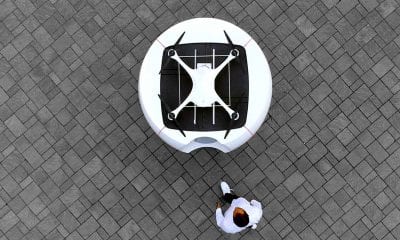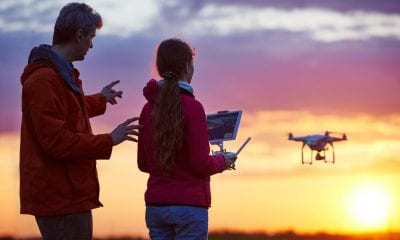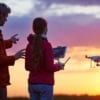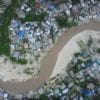
Drone Hive
Drones in Humanitarian Response
The Humanitarian Side of Drones
Drones have already made a huge impact in the commercial world, with growing prominence in the real estate, oil and gas and marine sectors. One area where it is slowly beginning to emerge is the humanitarian sector. In a world of growing population, widening wealth divide and a worrying rise in the frequency of natural disasters, humanitarian work is increasingly depending on technology to provide efficient and effective solutions.
Humanitarian organizations worldwide are slowly recognizing the ability of drones to provide a safe platform to collect real-time observations and actionable data and their flexibility in reaching inaccessible or unsafe areas. These properties can prove to be extremely helpful in quick and effective disaster response. Even under normal circumstances, drones can be useful in providing essential facilities or aid to far flung areas. Drones can also be used as an effective means of communication during emergencies.
The Role of Humanitarian Organisations
Humanitarian aid is material and logistic assistance to people who need help. It is usually short-term help until the long-term help by government and other institutions replaces it.
Humanitarian work involves providing material and logistical help during emergencies or disasters. While some work may also involve during non-emergencies, such work is technically defined as developmental work. Humanitarian work essentially looks to save lives and alleviate suffering, while providing basic medical help and necessities.
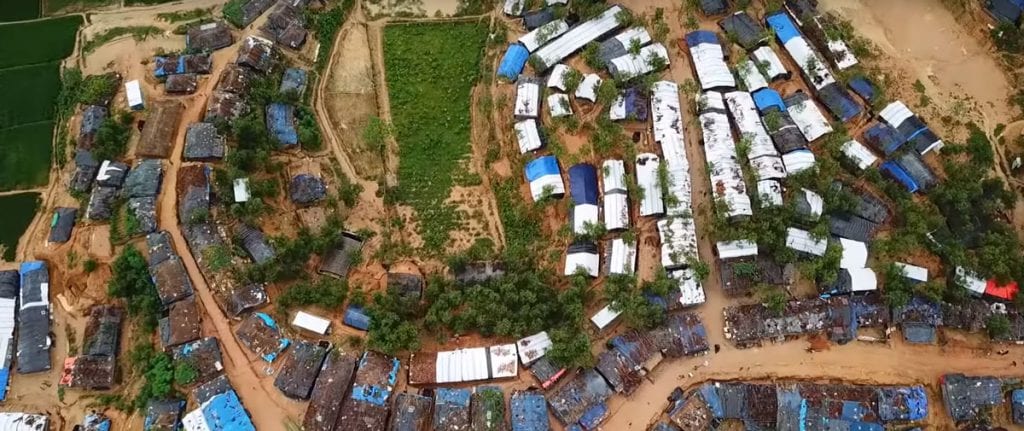
Cox’s Bazar, Bangladesh. Photo: WFP/Jonathan Dumont
The Entry of Drones
Given the circumstances under which most humanitarian work is done, it becomes critical that the aid reaches the target people at the earliest. For this to happen, it is essential that the organization providing the aid is able to:
- easily access the affected area
- able to survey the damage and locate the affected people
- decide which areas are more severely affected and need urgent assistance
- ensure the safety of aid workers
- deliver required supplies to the affected areas efficiently
It is not easy to ensure effective management of such critical operations under constraints. Areas of disaster are typically difficult to access, with likely poor weather conditions and communication hampering the aid work. This is where drones have proved to be a boon. Light-weight, relatively low-cost, easy to maneuver and ability to access remote locations, drones tick all the boxes required for small scale humanitarian aid work. Drones are equipped with sensors and cameras to detect wind and weather patterns, and can operate through smoke, wind and bad weather conditions.
Drones are currently being used by many humanitarian organizations across the world. The United Nation’s World Food Program (WFP) was the first to use an UAV in 2007. Drones have already proved useful in different ways, from mapping inaccessible areas to assessing damage from natural and man-made disasters, from aiding search and rescue missions to delivering food and medicine supplies during floods and cyclones. In Malawi where it often floods, the Department of Transport has been testing drones for humanitarian response tasks such as mapping, surveying, and delivery of food and supplies.
Already Making the Difference
Drones have already aided in humanitarian work in the following events:
- Malawi Floods (2017) – deliver supplies and food
- Hurricane Harvey (US, 2017) – assess damage to property and utilities
- Greece (2016) – rescuing refugees with remote controlled buoy
- Rwanda (2016) – deliver blood to remote hospitals
- Typhoon Haiwan (Philippines, 2013) and Hurricane Sandy (Haiti, 2012) – deliver supplies and food.
- Balkan floods (2014) – locate mines displaced by the flood
- Nepal earthquake (2015) – disaster relief
- US wildfires – detect, control and extinguish fires
Drones are also being utilised in other support related areas such as ecosystem management, urban development, providing aid during medical emergencies, preventing illegal logging and protecting wildlife.
Issues and Challenges
Drones have divided public opinion since the beginning. While there is no uncertainty over their potential usefulness, questions have been raised over their legality, the need for stronger guidelines and/or regulations, privacy and data protection issues and owner accountability. There have also been cases of unpermitted or improper use of drones, even during disaster management, ultimately obstructing aid/rescue operations. WFP has even discontinued the use of drones, pending clarity on these issues.
Some of the major challenges the humanitarian sector faces in utilising drones in their work are:
- Lack of coordination – Recent disasters like the Nepal earthquake in 2015 saw drones used by different agencies, some without appropriate permissions, leading to chaos and thus hampering the emergency work. Such haphazard deployment of drones not only heightens safety risk, but causes disruption and duplication of work. Precious time and resources are lost without ultimately benefitting anyone.
- Government and regulations – Local regulations also tend hinder humanitarian work, as most of these regulations have been drawn keeping the commercial sector in mind. Permission to fly, even during emergency work may get delayed.
- Lack of industry standards – Without common industry standards (flight elevation, camera angle and resolution), it becomes difficult to use the drone collected data sets in tandem with satellite imagery.
Such incidents have raised concerns at both government and organizational levels. There is a clear requirement for guidelines and protocols that need to be in place before the humanitarian sector can benefit from large scale use of drones.
There is need for:
- local capacity to ensure minimal disaster response time
- creating a coordination framework, to ensure effective use of drones and minimize overlapping and duplication of work
- willing participants who can coordinate with each other and share responsibilities
- greater interaction with government and local regulatory bodies, for faster response and support during emergencies
Solutions
WFP has initiated a project to understand and help establish some sort of guidelines for the use of drones, to improve broader coordination and address specific concerns arising from their use. WFP hopes to formulate an official framework by early 2018 that propose using drones through partnership during emergencies. The drones will be deployed and managed by any one aid group, to do away with duplication of work and effort. The other participants will have access to the data collected by the drones, thereby improving the overall efficiency of the aid work.
There are organizations that train local partners in different countries on flying drones. WeRobotics have “flying labs” providing relevant trainings in Nepal, Peru and Tanzania. SkyEye, World Vision and IOM are among 74 NGOs in the Philippines who have come together to form a community to share the cost of operating drones and efficiently use the collected data.
The Humanitarian UAV Network (with 3,000 members in 120+ countries) is also promoting ‘safe, coordinated and effective use of UAVs’ and has engaged with various government and non-government bodies to developing international guidelines for the same.
The Future
With global warming affecting climate change and potentially increasing the frequency of natural disasters, there is likely to be an increasing need for emergency humanitarian work across the globe. With the advancement in drone technology, these flying machines can prove to be a useful ally in the fight against man-made disaster and the vagaries of nature.
The need of the day is for various parties involved in humanitarian work to interact with local government bodies to create a roadmap for deployment of drones in emergency situations. Drones have already proved their worth in various walks of life. In time of disasters, it becomes imperative for help to reach fast and especially to inaccessible areas, where it becomes difficult for human help to reach. Proper coordination among various agencies can help save precious lives.









